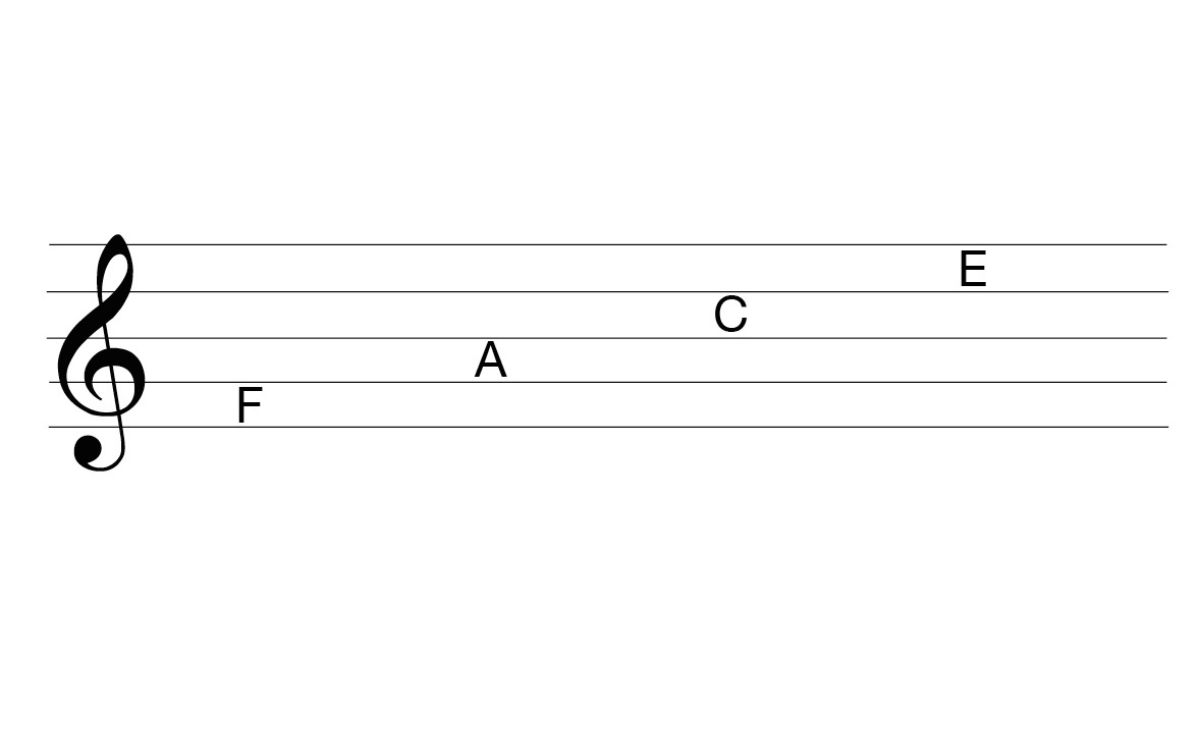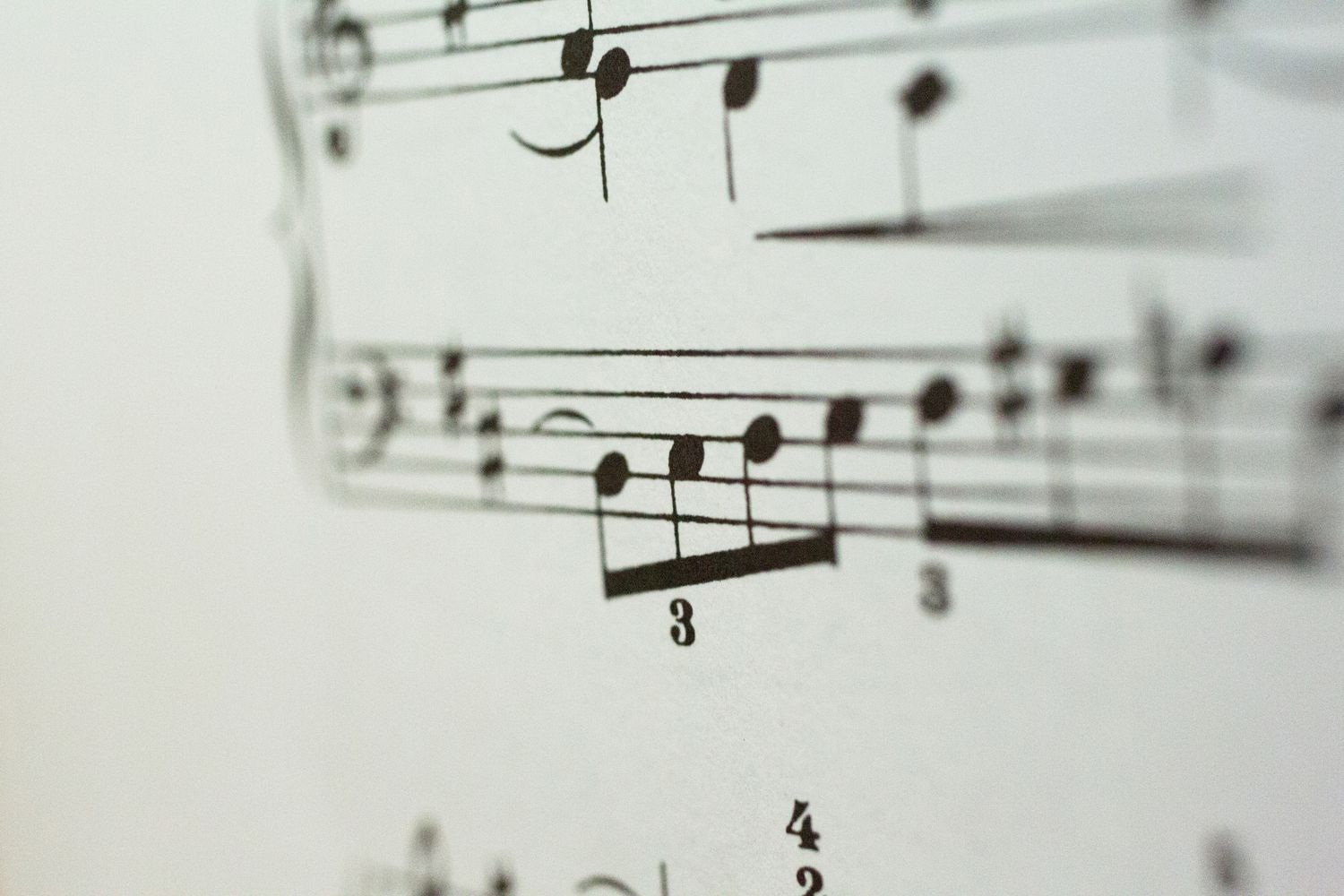Home>Production & Technology>Treble>What Are The Letter Names For The Lines On The Treble Clef Staff


Treble
What Are The Letter Names For The Lines On The Treble Clef Staff
Modified: January 22, 2024
Discover the names of the lines on the treble clef staff! Learn about the letter names for the lines with this helpful guide.
(Many of the links in this article redirect to a specific reviewed product. Your purchase of these products through affiliate links helps to generate commission for AudioLover.com, at no extra cost. Learn more)
Table of Contents
Introduction
The treble clef staff is a fundamental element of musical notation, specifically used to represent higher-range pitches in written music. It is also known as the G clef due to its distinct spiral shape that wraps around the second line of the staff, which represents the note G. Being able to read and understand the treble clef staff is essential for musicians, as it allows them to accurately interpret and perform music written in this clef.
In this article, we will delve into the letter names for the lines on the treble clef staff. Understanding these letter names is crucial for musicians, as it enables them to quickly identify and locate specific notes on the staff while reading sheet music. Whether you’re a music student, an aspiring musician, or simply interested in expanding your musical knowledge, this article will provide a comprehensive overview of the letter names for the lines on the treble clef staff.
So, grab your metaphorical musical magnifying glass and let’s explore the world of the treble clef staff!
Understanding the Treble Clef Staff
Before we dive into the letter names for the lines on the treble clef staff, let’s take a moment to understand what the treble clef staff represents and how it is structured.
The treble clef staff consists of five horizontal lines and four spaces. Each line and space on the staff corresponds to a specific pitch, allowing musicians to notate and read musical notes with precision. The lines and spaces are numbered from bottom to top, with the bottom line being the first and the top line being the fifth.
The treble clef itself is an ornamental symbol that indicates the position of the note G on the second line of the staff. This means that any note written on this line is automatically identified as G, simplifying the process of reading and interpreting the music.
Additionally, the treble clef has two dots known as the clef heart, which further emphasize the placement of the note G on the second line. These dots are a visual cue that helps musicians quickly identify the treble clef and its associated note.
It is important to note that the treble clef staff represents higher-range pitches, typically played by instruments such as the flute, clarinet, trumpet, and violin. The notes written on the treble clef staff are generally higher in pitch compared to those written on other clefs, such as the bass clef.
Now that we have a basic understanding of the treble clef staff, let’s proceed to explore the letter names for the lines on this staff. This knowledge will greatly enhance your ability to read and interpret sheet music written in the treble clef.
The Letter Names for the Lines on the Treble Clef Staff
Each line on the treble clef staff corresponds to a specific letter name, indicating the pitch of the note. Memorizing these letter names is crucial for musicians as it allows them to quickly identify and locate the notes on the staff while reading sheet music. Let’s explore the letter names for the lines on the treble clef staff.
- E: The bottom line of the treble clef staff represents the note E. It is the lowest pitch represented on the staff and is often played by instruments such as the double bass or cello.
- G: The second line from the bottom is where the treble clef gets its name from, as it represents the note G. This line acts as a reference point, making it easier for musicians to identify other notes on the staff.
- B: The middle line of the treble clef staff represents the note B. This line falls between the G and D lines and is an important landmark for musicians to navigate through the staff.
- D: The fourth line from the bottom represents the note D. This line is above the B line and below the F line, providing a clear progression of letter names as you move up the staff.
- F: The top line of the treble clef staff represents the note F. This is the highest pitch represented on the staff and is often played by instruments such as the flute or violin.
Remembering these letter names for the lines on the treble clef staff is a crucial step in becoming a proficient reader and interpreter of sheet music. By familiarizing yourself with these letter names, you will be able to confidently identify and play the corresponding notes on your instrument.
It is worth mentioning that in addition to the letter names on the lines, the spaces between the lines also have letter names. These names follow the sequence of the musical alphabet, which includes the letters C, D, E, F, and G. However, for the purpose of this article, we focused specifically on the letter names for the lines.
Now that you have a solid understanding of the letter names for the lines on the treble clef staff, you are one step closer to mastering the art of reading and playing music in this clef. Practice identifying these letter names on sheet music and gradually improve your ability to navigate through the treble clef staff with ease.
Conclusion
Understanding the letter names for the lines on the treble clef staff is a fundamental skill for any musician. By memorizing these letter names, you gain the ability to quickly identify and locate specific notes on the staff while reading sheet music. This knowledge enhances your musical literacy and allows you to confidently play and interpret music written in the treble clef.
In this article, we explored the structure of the treble clef staff, including its five lines and four spaces. We learned that the treble clef symbol represents the note G on the second line, serving as a reference point for identifying other notes on the staff. We also discussed the letter names for the lines on the treble clef, namely E, G, B, D, and F.
As you continue your musical journey, practicing and reinforcing these letter names will greatly improve your ability to read and interpret music in the treble clef. With time and dedication, you will become more fluent in reading and playing music, confidently navigating the treble clef staff.
Remember, music is a universal language, and the treble clef staff is a key element in translating the written language of music into beautiful sounds. Embrace the challenge, enjoy the process, and let the letter names on the treble clef staff guide you as you explore the vast world of music.
So, go ahead and grab your instrument, open a piece of sheet music in the treble clef, and let the letter names on the lines of the staff be your roadmap to musical expression.











